47 years ago today, the Trans-Alaska Pipeline (TAPS) one of the nation’s largest, was completed. The 800-mile (1,287 km) long pipeline conveys oil from Prudhoe Bay, on Alaska’s North Slope, south to Valdez on the shores of Prince William Sound in southcentral Alaska. It needed 4 years to build, and generated so much money for the state of Alaska that it went from being the most heavily taxed state to the least taxed state over the subsequent 30 years of the pipeline’s operation. One historian said this single pipeline was worth more than “everything that has been dug out, cut down, caught or killed in Alaska since the beginning of time.” READ the full quote, and how some of the environmental issues were resolved… (1977)
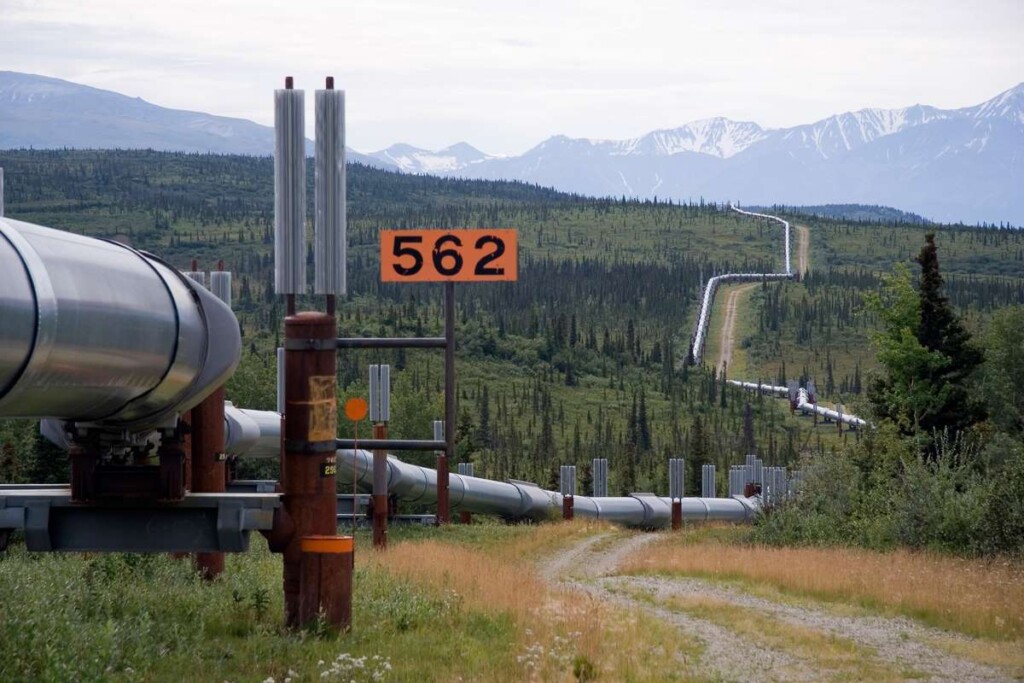
Trans-Alaska Pipeline – Luca Galuzzi CC 2.5.-BY-SA
It’s possible the pipeline might have been scuppered by environmental activists, but the United States’ unquestioning support for Israel’s occupation of Palestine led to the 1973 oil embarge by OPEC against the US—and a whole generation of Americans got their first tast of a true oil shock. Politicians reacted decisively in pushing the pipeline project through.
Concerns about TAPS centered around hypothetical spills, but mostly about its potential to bisect the carribou migration routes across Alaska. However, carribou were found routinely jumping over a water pipeline of similar diameter that stretches for 90 miles across former gold mining areas. Concerns about the maintanence’s highway irrevocably changing the face of the Alaskan Arctic were likewise assuaged by examples of former gold mining areas, which had become virtually indistinguishable from the landscape just 70 years after abandonment.
On the plus side was tax revenue and cheap power, as historian Terrence Cole put it: “The wealth generated by Prudhoe Bay and the other fields on the North Slope since 1977 is worth more than all the fish ever caught, all the furs ever trapped, all the trees chopped down; throw in all the copper, whalebone, natural gas, tin, silver, platinum, and anything else ever extracted from Alaska too. The balance sheet of Alaskan history is simple: One Prudhoe Bay is worth more in real dollars than everything that has been dug out, cut down, caught or killed in Alaska since the beginning of time.”
The sale of Prudhoe Bay oil extraction rights alone was 9-times the state’s budget, and the tax revenue was so high that it allowed Alaska to create the Alaska Permenant Fund—the only example of a rudimentary income practice in the US, where residents who lived in the state the whole year with intention to remain the next year receive $1,600 from the fund as a dividend. These payouts have been ongoing for 40 years, and the fund today is worth $64 billion.
The state of Alaska is contstantly updating the plans for removing the pipeline once oil extraction ends—sometime in the next 20 years. Laws dictate that “all traces” of the pipeline are to be cleared once it’s finished.
MORE Good News on this Day in History:
- The U.S. enacted its first copyright statute to protect the works of creative authors in the literary, dramatic, musical, architectural, cartographic, choreographic, pantomimic, pictorial, graphic, sculptural, and audiovisual fields, so they may reap the fruits of their intellectual creations for a period of time (1790)
- Big Ben, the world’s largest four-faced, chiming clock first started ticking (1859)
- The Soviet Union signed an agreement pledging respect for Outer Mongolia as sovereign to China (1924)
- Republic of South Africa was founded (1961)
- The pilot episode of Seinfeld was first broadcast on NBC (1990)
- The United States announced it was no longer aiming long-range nuclear missiles at targets in the former Soviet Union (1994)
- Usain Bolt set a new 100 m world record at the Reebok Grand Prix in the Icahn Stadium in New York City. He ran 9.72s with a tailwind of 1.7 m/s (2008)
446 years ago today, King Henry III laid the first stone of the Pont Neuf or “New Bridge” in Paris, which ironically today is the oldest bridge in France. The irony grows as it looks extremely modern thanks to a recent restoration.
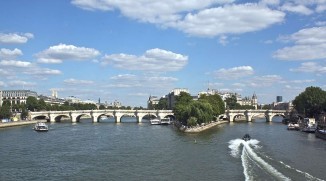
It stands by the western (downstream) point of the Île de la Cité, the island in the middle of the River Seine that is believed to have been the city’s original birthplace 2,300 years ago. The bridge took almost 30 years to build, and has undergone extensive renovations.
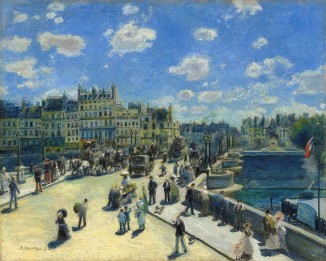
The Wikipedia article of Pont Neuf is packed to the rafters with anecdotes from visitors to Paris who, upon crossing the bridge, encounter a variety of circus performers, showmen, snake oil salesmen, peddlers, hucksters, Charlatans, criminals, disturbed ramblers, aristocracy, poodle clippers, and broke artists of every description; an artery of urban character so varied that it was assumed if someone had not been seen on the bridge for 3 days, they had left Paris entirely, and that a satirical or witty comment of any sort in any domain was termed in slang, “a New Bridge.” (1578)
203 years ago today, The Basilica of the National Shrine of the Assumption of the Blessed Virgin Mary, also called the Baltimore Basilica, became the first Roman Catholic cathedral built in the United States. It was among the first major religious buildings constructed in the nation after the adoption of the U.S. Constitution, and is considered the masterpiece of Benjamin Henry Latrobe, the ‘Father of American Architecture’.
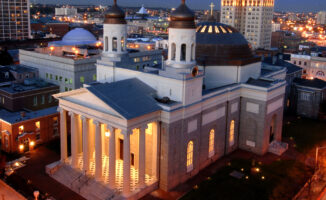
Built by America’s first professionally-trained architect and Thomas Jefferson’s Architect of the U.S. Capitol, within its walls occurred many famous events, including the funeral Mass of Charles Carroll, the only Catholic signatory of the Declaration of Independence.
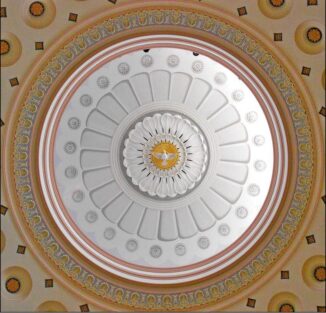
Most of the first American bishops were consecrated here—and until recent years, more priests were ordained at the Baltimore Basilica than in any other church in the United States. (1821)
98 years ago today, Kruger National Park was established in Limpopo and Mpumalanga in northeastern South Africa. One of the largest game reserves on the continent, it is more than twice the size of Yellowstone, at 7,576 square miles (19,623 square kilometers). Part of the Great Limpopo Transfrontier Park, it crosses over the border with Mozambique and Zimbabwe, forming a protected area bigger than Belgium.
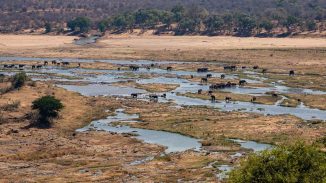
With 147 species of large game animal, Kruger has more biodiversity than any other African game reserve, and at certain times it’s had so many elephants that they’ve needed to be translocated to other reserves and parks because the park—bigger than Belgium, can’t carry their weight. It also has the largest populations in southern Africa of wild hunting dogs, and white rhino. (1926)
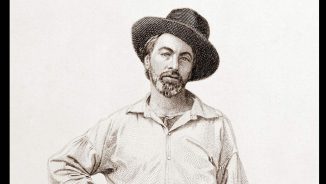
And, 205 years ago today, Walt Whitman, one of America’s greatest poets, was born in New York. He published his seminal collection, Leaves of Grass, when he was 37 years old, which challenged the definition of poetry, and forever changed its form and function.
Published in 1855 with his own money, Leaves of Grass was an attempt at reaching out to the common person with an American epic. It was considered obscene at the time, but by the end of his life was recognized as a masterpiece. He also wrote, “O Captain! My Captain!,” a 1865 poem about the death of Abraham Lincoln. WATCH a short bio below… and see 10 mementos of his life in the N.Y. Times. (1819)
And, Happy 94th Birthday to actor-director Clint Eastwood who starred in Hollywood Westerns and cop films like Dirty Harry that simply defined the word ‘cool’. He went on to write and direct some of the most acclaimed films of the 21st century—Unforgiven, Million Dollar Baby, and Gran Torino—all while in his 70s and 80s. For the first two, Eastwood won Oscars for Best Director and Best Picture, as well as nominations for Best Actor.
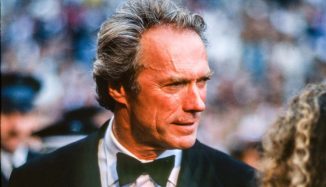
Retired from acting, he churned out nine films in his 80s, and has expressed no desire to retire from directing. He is also the former Mayor of the California city, Carmel-by-the-Sea.
His greatest commercial success was the comedy Every Which Way But Loose (1978) and its sequel, but he also directed the mystery drama Mystic River and the war film Letters from Iwo Jima (for which he received Academy Award nominations), the drama Changeling (2008), and the sports drama Invictus (2009). The biopic American Sniper (2014) set box-office records for the largest January release ever and was also the largest opening ever for an Eastwood film.
In 2019, he premiered his film Richard Jewell, depicting the Olympic Park bombing in Atlanta, when the security guard who found the bomb was later accused of the crime. It starred Sam Rockwell, Jon Hamm, and Kathy Bates, who earned an Oscar nomination for the film. WATCH his newest trailer from November… (1930)
SHARE the Milestones and Memories on Social Media…




















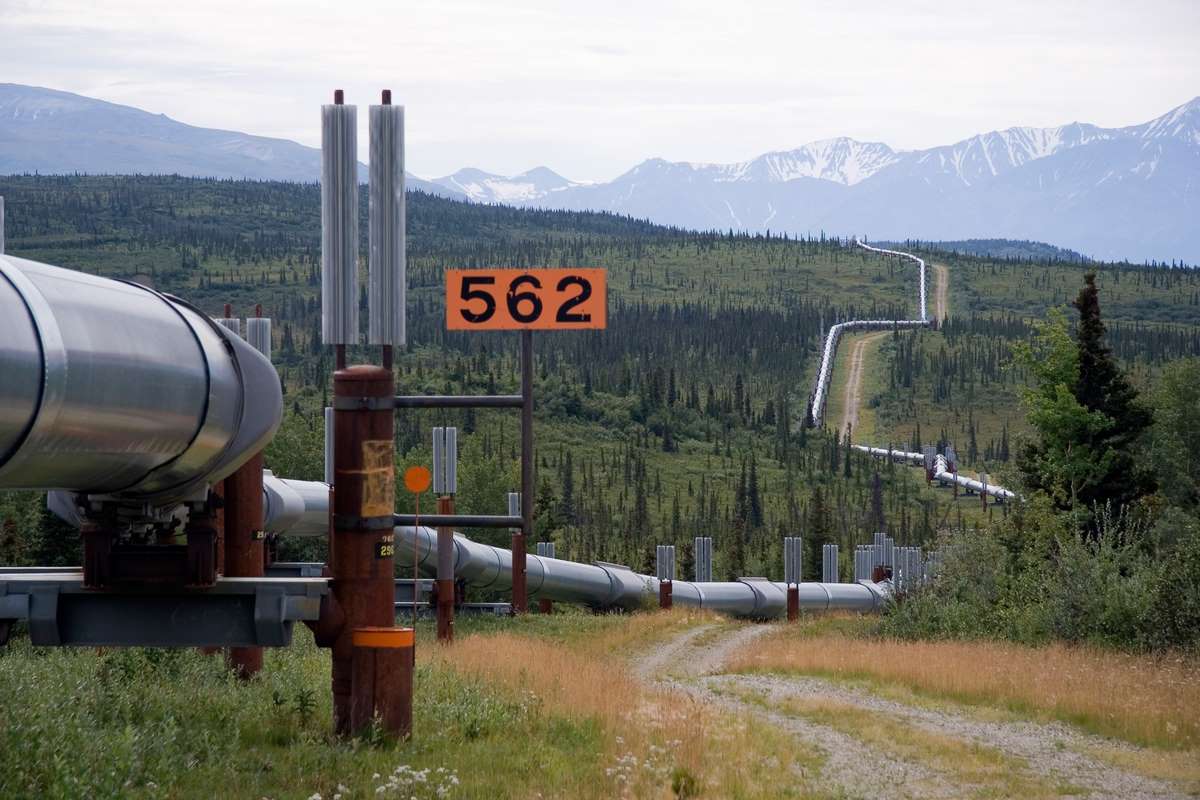
[…] By Good News Network […]
[…] Good News in History, May 31 […]